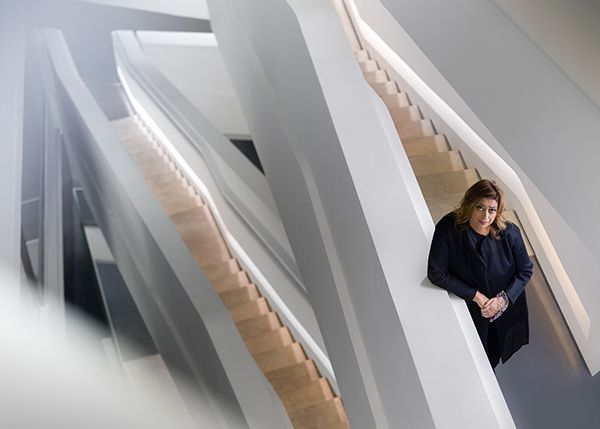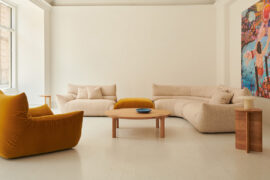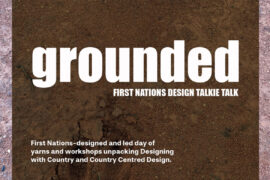Celebrated architect Dame Zaha Hadid has passed away at age 65. Despite her young age, the Iraqi-born, British designer leaves behind a magnificent legacy and portfolio that includes the London Aquatic Centre for the 2012 Olympic Games, MAXXI Italian National Museum of 21st Century Arts in Rome, and a stadium for the 2022 FIFA World Cup in Qatar.

April 1st, 2016
Brazen, highly experimental, impactful and inspirational – Zaha Hadid regularly ventured where few would dare. Earlier this year she was the first woman to receive the Royal Institute of British Architects (RIBA) Gold Medal in its 180 year history. She was the first woman to win the Pritzker prize in 2004, placing her amongst the company of artistic visionaries like Gehry and Utzon.
Born in Baghdad in 1950, Hadid studied mathematics at the American University in Beirut, and relocated to London in 1972 where she studied at the Architectural Association, a centre for experimental design and the oldest independent school of architecture in the UK. She established her own practice in 1979, and from there began to receive recognition for her futuristic, fantastical unrealised drawings and paintings, such as the Peak Leisure Club in Hong Kong (1983) and Kurfürstendamm 70 in Berlin (1986).
Despite some controversies surrounding construction, Hadid’s designs have captured the imagination of people the world over. Often featuring undulating folds, feminine bows and mind-bending curvatures – her life’s work is made up of a collection of ambitious, emotive and future-focused projects. The Dongdaemun Design Plaza in Seoul is a floating silver aluminium orb, and earned the city the title of World Design Capital in 2010. Hadid’s Heydar Aliyev Centre in Azerbaijan is made up of a series of almost calligraphic flicks and waves in brilliant, glowing white. The building was a technological masterpiece – a combination of geometry, structure and materiality, brought together and controlled by advanced computer algorithms. Her design work crossed disciplines, and included furniture, jewellery, footwear, cars and the fittingly titled ‘Z.Boat’.
Other notable Hadid inventions include the Riverside Museum of Transport in Glasgow, the Vitra fire station in Weil Am Rhein in Germany and the Guangzhou Opera House in China. See our compilation of just a few of Hadid’s most inspired projects here.
Hadid was an iconic leader, who refused to be slowed down by her background or her gender. “I am non-European, I don’t do conventional and I am a woman,” she once said in an interview. Her influence is spread across disciplines and across all walks of life – within the very art of architecture, for women, and in evolving future cities all over the world.
Hadid suffered a heart attack while being treated for bronchitis at a hospital in Miami on March 31, 2016.
INDESIGN is on instagram
Follow @indesignlive
A searchable and comprehensive guide for specifying leading products and their suppliers
Keep up to date with the latest and greatest from our industry BFF's!

A curated exhibition in Frederiksstaden captures the spirit of Australian design
The new range features slabs with warm, earthy palettes that lend a sense of organic luxury to every space.

For Aidan Mawhinney, the secret ingredient to Living Edge’s success “comes down to people, product and place.” As the brand celebrates a significant 25-year milestone, it’s that commitment to authentic, sustainable design – and the people behind it all – that continues to anchor its legacy.
Corporate Culture’s showroom was redesigned around the theme ’Lounging around with Corporate Culture’.
Hettich’s™ Magic Lighting Systems are unique, innovative and energy efficient.
The internet never sleeps! Here's the stuff you might have missed

Sydney Open invites the public to explore over 55 buildings, spaces and new additions to the skyline, with a newly released Talks & Tours program offering direct access to the architects behind Bundarra and Pier Pavilion.

COX Architecture and Yerrabingin reveal the design for Canberra Lyric Theatre — a world-class, inclusive venue for the nation’s capital.

Several design groups are coming together on 29th October, 2025 for ‘grounded,’ a day of talks and workshops on Country-centred design.

The final day of CPD Live’s 2025 season delivers three must-attend sessions exploring circular design for furniture and fitouts, and the science behind safe, high-quality drinking water. Starting from 9 AM AEDT, 16th October – it’s your last opportunity this year to join our Live CPD sessions and finish 2025 inspired.